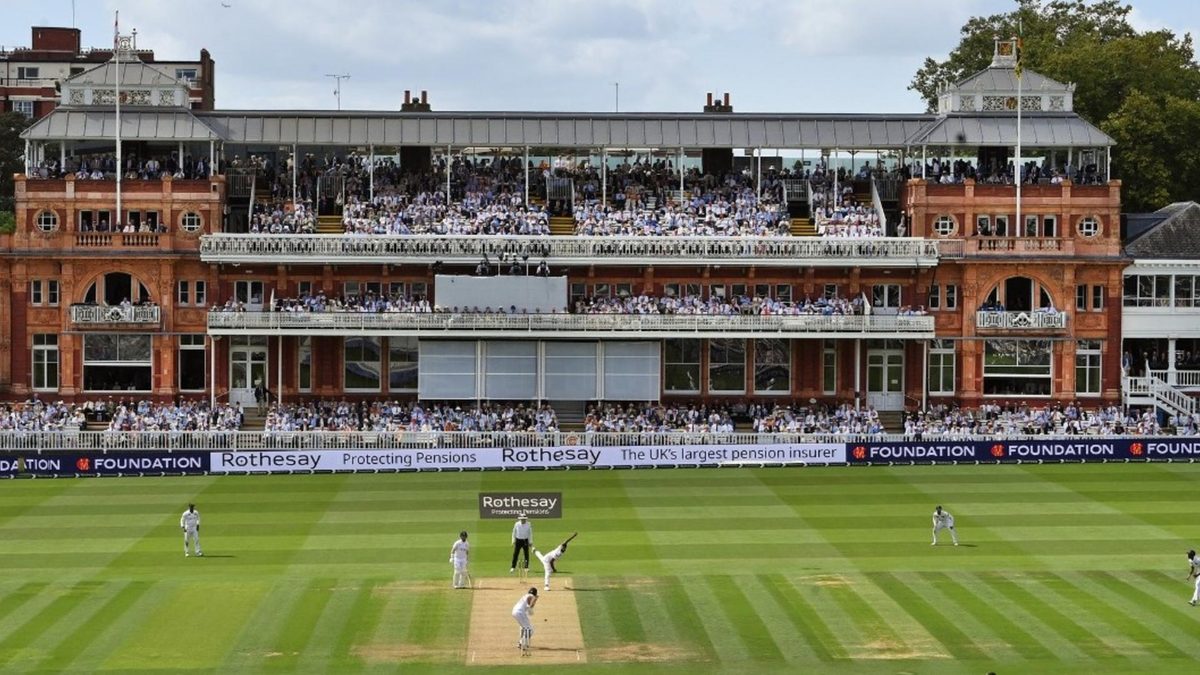
The slope at Lord's is one of cricket's most fascinating anomalies: here's all you need to know about it.
The slope at Lord's, one of cricket's most iconic venues, is exactly what it sounds like: a slant running from the Grandstand side to the Tavern side. It's an eight feet, two inch difference cutting horizontally across the pitch: which means an average person from one end of the slope would not be visible from the other end.
For about two centuries, and the 148 Tests played at the venue, cricketers have had to accustom to the slope.
Lord's slope: The advantage to bowlers
Tim Murtagh, the English-born Irish seamer, told ECB last year that bowling from both ends can be beneficial due to the slope. "You have the slope that takes the ball away from the right-hander," he said. "So, even when the wicket’s flat and good, there’s always something to play with from a bowler’s point of view."
"Bowling at the Pavilion End, someone like Glenn McGrath had a great amount of success there, targeting the stumps with the ball running back down the hill into the right-handers and away from the left-handers. So, depending on which end you bowl from, there’s always something you can utilise throughout the day."
"You're not leaving with confidence"
Former England seamer Angus Fraser, speaking to New York Times, also spoke about the benefits of the Pavilion End, which some of the finest bowlers of the world exploited. When batting from the Nursery End, the slope angles down from right to left, which can cause the ball to nip back in. "You're not leaving with confidence," Fraser said.
“I bowled from the Pavilion End predominantly, and in my time, there were far more right-handed batters than left. That end has always been the best for bowlers who can bowl a consistent line. I was a good bowler but not as good as Glenn McGrath, Jimmy Anderson and Curtly Ambrose, and they all preferred the Pavilion End.
"I remember Alec Stewart being bowled by McGrath in an Ashes Test when he was leaving the ball, and if that happens every now and then, a batter can get really nervous about where their off-stump is."
"Certainly the first couple of times, we’ve seen batters fall over a lot from batting at the Pavilion End," Murtagh said. "It’s just something you have to slightly adjust in either your feet or your centre of gravity or your weight position. It’s tricky for both batters and bowlers when they first come there."
At the same time, even a slightly straighter angle can easily run down the leg side, and an over-correction can lead to the bowler sending a wide hit-me delivery.
Why has the slope never been fixed?
To address the lopsidedness, a major chunk of the ground would have to be dug up and stands be readjusted. There have been conversations around fixing the slope in the past, but nothing more. Back in 2001, there were reports that "drop-in" pitches could be installed as Lord's as a new drainage system was being laid, potentially even altering the Lord's slope.
But it stayed on, despite a £1.25m project that installed a new outfield, and was completed in 2002. About 17,000 tonnes of the old surface were removed, with the new pitch draining much quicker.
For several decades, the Lord's slope has kept challenging players, sticking out as a now iconic geographical anomaly. It look set to be intact for several more.
Follow Wisden for all England vs India updates, including live scores, latest news, team lineups, schedule and more. The live streaming details for the ENG vs IND series in India, UK, USA and rest of the world can be found here. For Wisden quizzes, head here.








